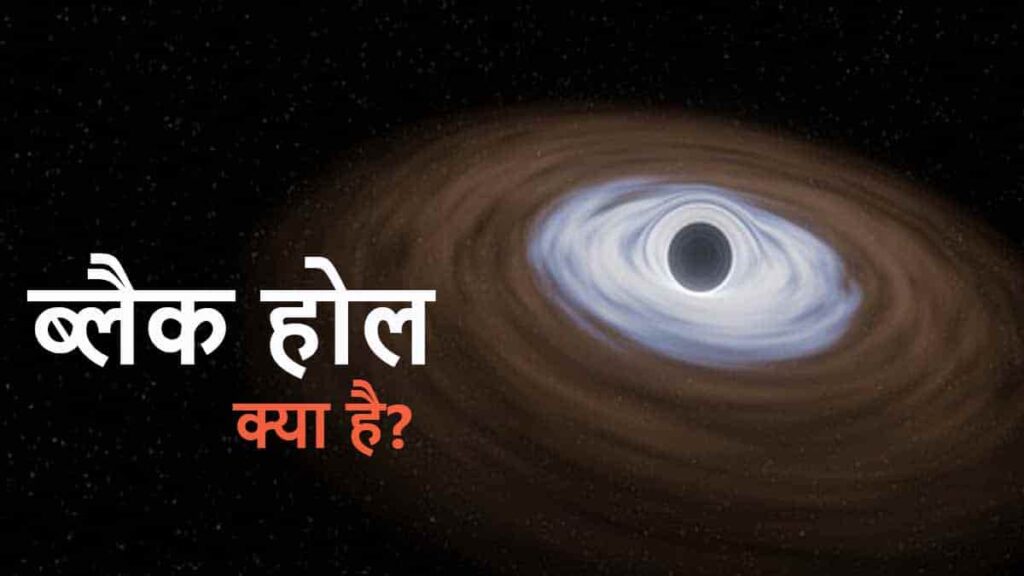
WHAT IS BLACK HOLE | Types of Black Holes 2023
A black hole: Unveiling the Enigma of Depths
Introduction:
As we navigate through the cosmos, we have witnessed the unparalleled beauty of countless galaxies, stars, and planets. Science has endeavored to unravel the mysteries underlying the profound processes occurring within the depths of the universe. The concept of a black hole is one such enigmatic subject, demanding an understanding of the events transpiring within its profound depths.
Definition and Fundamental Characteristics:
A black hole, colloquially referred to as a “Kala Gehra” in Hindi, is a region in space where the gravitational field is so intense that nothing, not even light, can escape from it. The gravitational pull near the surface of a black hole is so strong that it prohibits the escape of any object, including electromagnetic radiation and light itself.
The gravitational field of a black hole is so intense that it warps both time and space. This phenomenon is often explained using Einstein’s theory of General Relativity. The immense gravitational pull distorts the fabric of spacetime, leading to the phenomenon known as gravitational time dilation. As a result, time flows slower near a black hole compared to regions with weaker gravitational fields, a concept that gave rise to the notion of black holes as “time machines.”
Types of Black Holes:
Based on scientific research, there are two main types of black holes: stellar black holes and supermassive black holes.
Stellar Black Holes: These black holes typically form at the end of the life cycle of massive stars. When a star with a mass greater than or equal to about three times that of our Sun exhausts its nuclear fuel, it undergoes a catastrophic gravitational collapse, resulting in the formation of a stellar black hole. These black holes are relatively smaller in size compared to supermassive black holes.
Supermassive Black Holes: These black holes are found at the centers of galaxies and are significantly larger than stellar black holes, with masses ranging from millions to billions of times that of our Sun. The exact mechanism of their formation is still a topic of ongoing research, but it is believed that they form through the accretion of mass over cosmic timescales.
Formation and Properties:
The formation of a black hole is a complex process involving the collapse of a massive star’s core under the force of gravity. As the core collapses, its mass becomes concentrated in an infinitesimally small volume, leading to the formation of a singularity. This singularity is the heart of a black hole, a point of infinite density where the laws of physics, as we understand them, break down.
Black holes are characterized by three main properties: mass, charge, and angular momentum. These properties define the unique nature of a black hole and dictate its gravitational effects on the surrounding space.
Event Horizon:
The most defining feature of a black hole is its event horizon, which is the boundary beyond which escape is impossible due to the immense gravitational pull. Anything that crosses the event horizon is considered to be inside the black hole and is forever hidden from our observations.
Hawking Radiation and Black Hole Information Paradox:
In the 1970s, physicist Stephen Hawking proposed the existence of what is now known as Hawking radiation. According to his theory, black holes are not entirely black; they emit radiation due to quantum effects near the event horizon. This phenomenon suggests that black holes can slowly lose mass and evaporate over time, eventually leading to their complete disappearance.
Hawking’s theory gave rise to the famous “Black Hole Information Paradox.” This paradox questions the fate of information that falls into a black hole. According to the principles of quantum mechanics, information cannot be destroyed, but the evaporation of a black hole seems to suggest otherwise. Resolving this paradox is a significant challenge in modern physics and has led to extensive debates and research.
Observational Evidence:
Despite the fact that black holes do not emit visible light, scientists have developed methods to detect and indirectly observe their presence. One of the most compelling methods is the observation of the gravitational effects of black holes on nearby objects, such as stars orbiting an invisible mass. The phenomenon of gravitational lensing, where the gravity of a black hole bends the light from background stars, also provides evidence of their existence.
Recent advancements in astronomy, particularly through the use of telescopes capable of observing various wavelengths of electromagnetic radiation, have enabled us to gather more evidence of black holes’ existence and study their properties in greater detail.
Conclusion:
Black holes continue to captivate the human imagination with their mysterious and awe-inspiring nature. From the enigmatic event horizon to the mind-bending concepts of time dilation and singularity, black holes challenge our understanding of the universe’s fundamental laws. Scientific research into these cosmic entities remains a frontier of exploration, promising to unravel the secrets of space and time that lie within their depths. As we continue to delve deeper into the mysteries of black holes, we inch closer to deciphering the intricate tapestry of the cosmos itself.
